One of few birds to sing reliably both in the depths of night and during the day, nightingales perform for a brief, intense season.
Their eclectic inventory of notes and phrases, and the masterful, intuitive way they string them together, is quite unlike any other British bird.
Describing them in words inevitably generates a list that might belong on a shelf at the BBC Radiophonic Workshop:
weird and rapid oscillations
delicate liquid interjections
a series of whistles that start imperceptibly and build to a dramatic and abrupt finale
a penetrating ‘jug-jug-jug-jug’ phrase that carries far on a warm, still night
dirty low scolding churrs
trills to make time stand still
And among all of these: exquisitely-judged pauses. All the more delicious when experienced in the dark, and with no other birds in song.
Given their efforts, it’s perhaps not surprising that the season for their song is short. It begins upon their return from Africa in mid-April and is mainly finished by early June. Just the occasional straggler sings at midsummer.
While their sound is hard to ignore, the sight of one can be hard to come by. Nightingales often tuck themselves away in the densest of thickets, and these places are the key to their survival.
Thicket inspectors
Nightingales are on the edge of their range in Britain, and their distribution here is shrinking, now mainly restricted to the south-east of a line between the Wash in Lincolnshire and the Severn.
Here they are often associated with ancient woodland and supposedly unspoilt places, but their true relationship to the land is less nostalgic.
A clue to their real needs lies in their abundance elsewhere.
Around the Mediterranean, where they are much more common, nightingales spend the summer in a host of rough and scrubby places - and it’s that dense scrub that is most important to them here too, not tall temperate trees.
So in English woodland, where there are coppiced glades or understory unmunched by too many deer, there can be nightingales. But they are also drawn to more open places with chaotic emerging vegetation - the fringes of old flooded gravel pits, inaccessible downland escarpments and tangled corners along river valleys.
The truth of this is borne out by the increasingly famous recent rejuvenation of nightingales on the Knepp Estate in West Sussex.
There the formerly arable fields and pasture are bubbling with new growth. The old hedgerows have billowed out to create wide, hollow-hearted fortresses in thorn; dreamy conditions for a nightingale.
Even walking at Knepp, where nightingales are common, you would be forgiven for thinking they had gone by July, but they are merely low-key from that point.
You may hear their frog-like croaking as they feed among the undergrowth, though you will be lucky to see one.
Nightingales migrate south to Africa in August and early September, unheard and unseen. But not forgotten.
🎶 Read more about nightingales at Knepp
🎶 Discover more places to hear a nightingale (BBC Wildlife)
🎶 Watch The Nightingale’s Song (film) by Adam Loften and Emmanuel Vaughan-Lee
Sometimes confused with: Song Thrush
This is the 16th instalment in 2025’s cycle of Shriek of the Week. You can catch up with Robin, which includes details of the plan for this year, as well as Wren, Song Thrush, Blackbird, Great Tit, Dunnock, Chaffinch, Goldcrest, Nuthatch, Chiffchaff, Skylark, Great Spotted Woodpecker, Blackcap, Starling and Willow Warbler.
For those who can, subscribing to the paid tier to Shriek of the Week supports me to write more and keep this all going.
It also gets you access to the full A-Z archive of Shriek of the Week AND our livestream-hopping Early Bird Club call - the next is 8am BST (GMT +1) on Saturday 3rd May.
🪶 Link of the week: Featherbase
Featherbase is “a working group of German feather scientists and other collectors worldwide who came together with their personal collections and created the biggest and most comprehensive online feather library in the world.”
Quite apart from the value to ornithology, many of the images are just fascinating - try the Silver Pheasant or the Sunbittern.
(via Lev Parikian at Six Things)
Media credits:
Nightingale recording by Lawrence Shrove, courtesy of the British Library.
Nightingale image by Flickr user Rob Zweers, reproduced under Creative Commons licence CC BY-ND 2.0
Knepp image copyright Knepp Wildland
Song Thrush image by ntrief on Pixabay
🌳 Are you a communicator working for climate, nature recovery or community resilience? Join 250 others determined to rise to the challenges of our times at Content Rising, a gathering at the Millennium Seedbank, Kew Wakehurst in Sussex, this June.

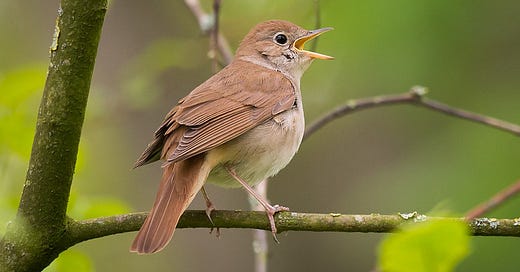


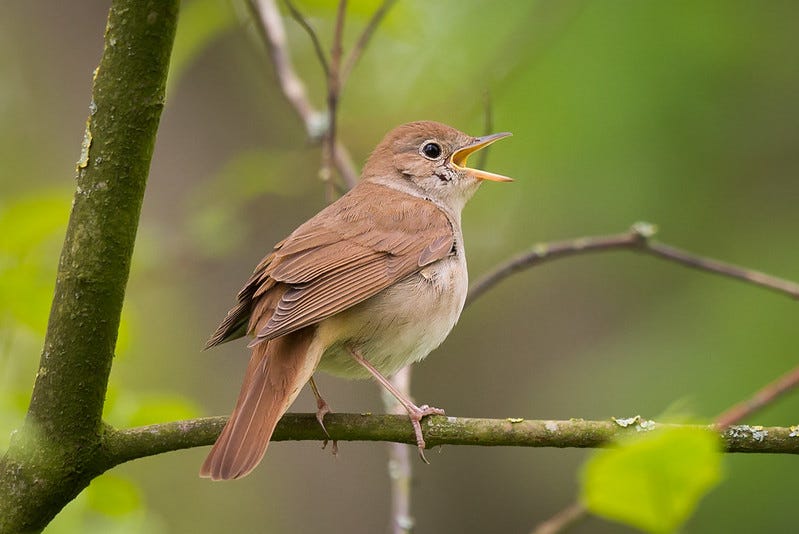
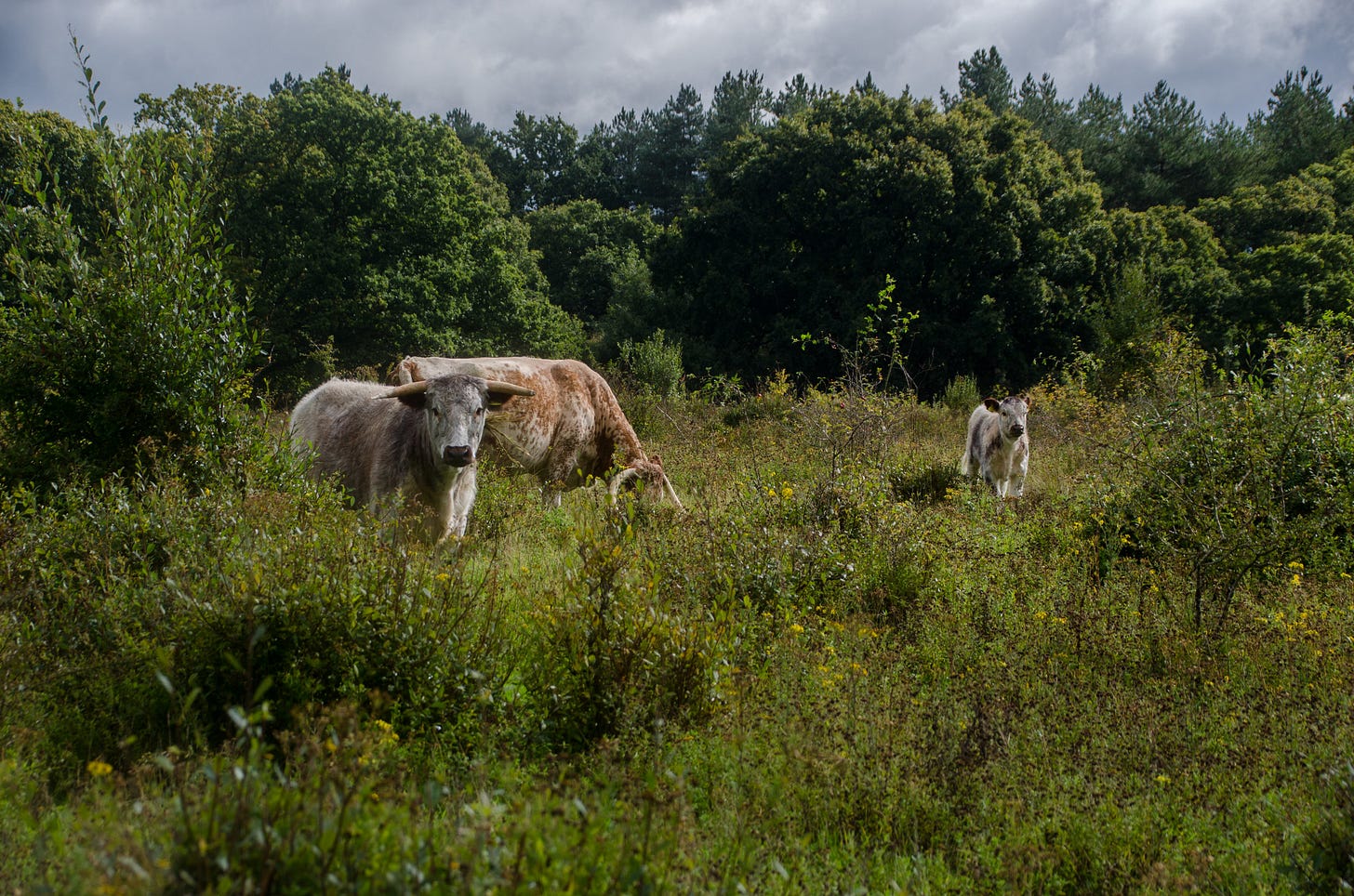
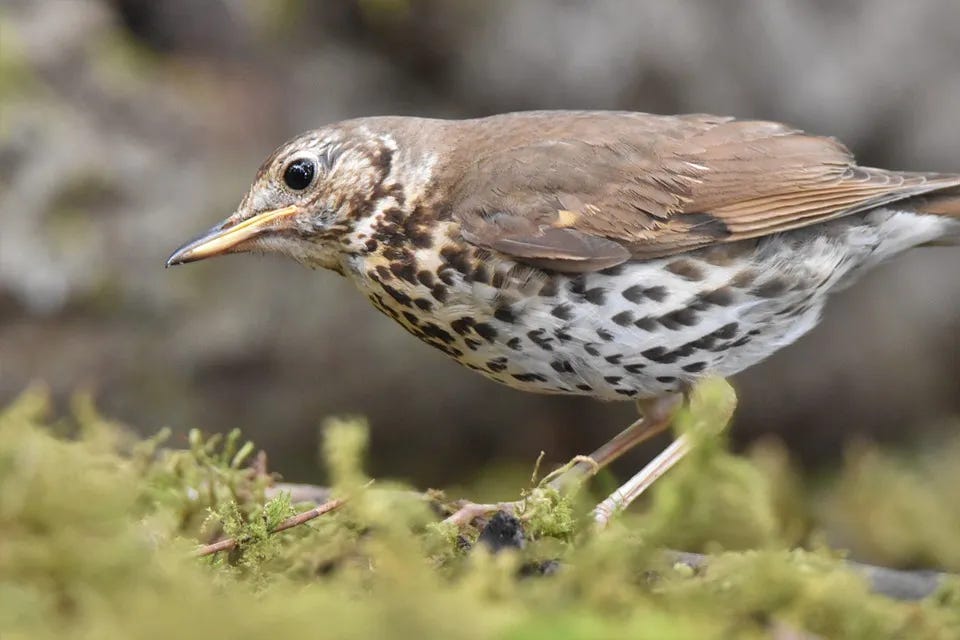



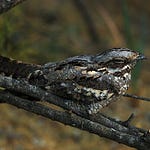
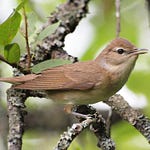

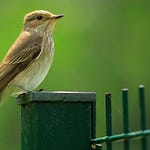



Share this post